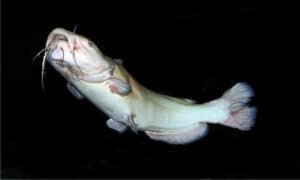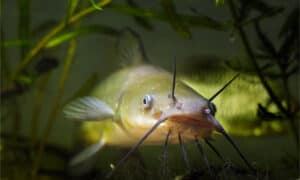The flathead catfish — its very name conjures images of Idaho’s tranquil rivers and vibrant aquatic life. This unique species, known for its flattened head and notable size, has become an integral part of the state’s freshwater habitats. It’s an apex predator, contributing to the delicate balance of these ecosystems while also being a popular target for local anglers.
In the Idaho waters, the flathead catfish leads an intriguing life. Its nocturnal habits, diverse diet, and propensity for slow-moving waters all paint a picture of a species perfectly adapted to its surroundings. Over time, it has spread throughout several of Idaho’s waterways, carving out a significant niche for itself within the state’s biodiversity.
The presence of the flathead catfish in Idaho has not only added to the natural richness of the state but also sparked interest among fishing enthusiasts and conservationists alike. Its story in Idaho — one that involves ecological balance, recreational fishing, conservation efforts, and future prospects — is a captivating tale of the intertwining lives of humans and nature.
In this article, we discover the largest flathead catfish in Idaho. We will explore their history in the state, their biology and behavior, their diet, and even the predators they have to watch out for. We’ll uncover their favorite habitats across Idaho and their significant role within the ecosystem.
The Largest Flathead Catfish Ever Caught in Idaho
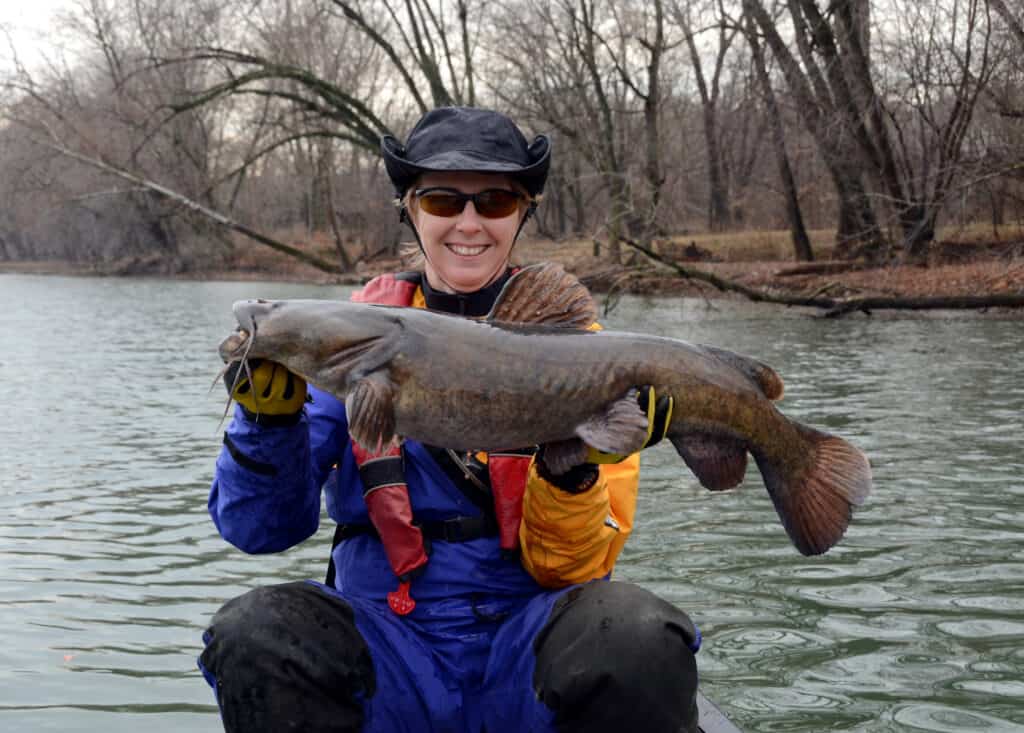
Heavy tackle is needed to catch one of these beasts and live fish as bait.
©M. Huston/Shutterstock.com
The largest flathead catfish ever caught in Idaho weighed 58.5 pounds. Anglers J. Newberry and K. McCormick caught the catfish at the Brownlee Reservoir on August 23, 1994. It was 48 inches long with a girth of 31 inches.
The Largest Flathead Catfish Ever Caught Worldwide
Ken Paulie holds the title of the largest flathead catfish ever caught. He made this impressive catch over two decades ago. The catfish that Paulie snagged weighed in at a staggering 123 pounds and measured more than 5 feet in length.
The Kansas Department of Wildlife and Parks confirmed Paulie’s record, which has remained unbeaten for over 20 years. However, despite its verification, some have cast doubt on the authenticity of Paulie’s catch. Interestingly, he was fishing for crappie with a light tackle when he happened upon this enormous flathead, marking it as a fortunate catch.
For several years, Paulie’s record flathead catfish was kept frozen. It wasn’t until 2016 that it was presented to the Kansas Department of Wildlife, Parks, and Tourism for detailed analysis. Following their study, scientists concluded that the colossal flathead catfish was at least 22 years old, had experienced rapid growth, and was likely a male.
History of Flathead Catfish in Idaho
It all started in the swinging sixties. The Idaho Department of Fish and Game (IDFG) got their hands on a few flathead Catfish with an inkling that they might just become a big hit in the local fishing scene. Introduced as a game fish, these aquatic adventurers were set to add a new flavor to Idaho’s fishy repertoire.
Propagating Populations
After their initial introduction, it didn’t take long for these creatures to settle down. They loved the Idaho life, with its abundance of lakes and rivers providing the perfect environment for them to grow and multiply. Over the ensuing decades, their population didn’t just stabilize; It flourished! The numbers kept climbing, turning them from a rare novelty into a common sight in Idaho waters.
Shaking Up the Fishing Scene
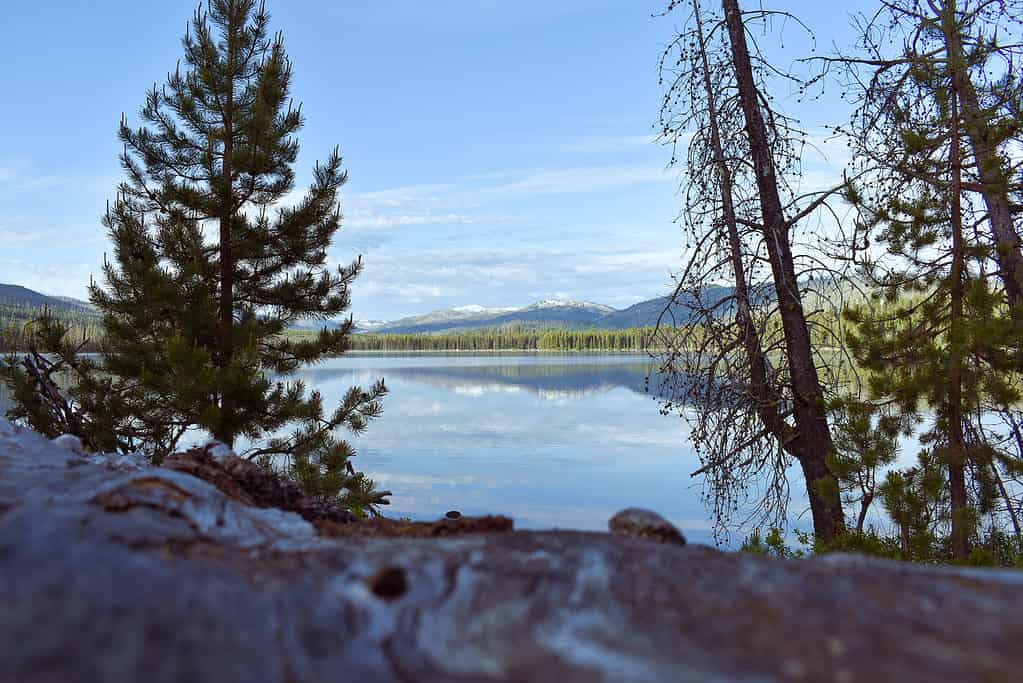
There are many beautiful lakes in Idaho for locals to show off their fishing skills.
©Caleb Adolfson/Shutterstock.com
Now let’s talk about the local fishing scene. The impact the flathead catfish had? Well, it was huge. As word spread about these enormous, hard-fighting fish, local anglers couldn’t resist. The buzz was all about the flatheads. Their size and fighting spirit was a game-changer. It brought a whole new level of excitement and challenge to fishing in Idaho. Before long, the flathead catfish wasn’t just another fish in the river. It was a star attraction.
An Established Resident
So, here we are. Over half a century since their first introduction, the flathead catfish is a well-established part of Idaho’s aquatic fauna. They have played a major role in shaping the state’s fishing industry and continue to draw anglers from far and wide. What started as a modest introduction back in the 1960s has led to a significant shift in Idaho’s fishing landscape. A whiskered revolution, you might say.
Biology and Behavior of Flathead Catfish

Flathead catfish can grow up to 60 inches!
©iStock.com/stammphoto
Picture a fish that’s impressively big and unapologetically distinctive. That’s our flathead catfish for you! These sizable swimmers are easy to spot, thanks to their flat heads (surprise, surprise!) and protruding whiskers, which are actually called barbels. A mature flathead catfish can measure anywhere from 20 inches to a whopping 60 inches, and they can live up to 20 years or more. A giant in freshwater bodies, isn’t it?
The Circle of Life
Now, let’s talk about their life cycle. Flathead catfish mate in late spring or early summer when the water temperatures are just right. It’s pretty cool how they do it: The males prepare the nesting sites, usually in dark, secluded places. Then, after the eggs are laid and fertilized, the males stand guard, protecting the next generation. It’s all very exciting, and before long, you’ve got a whole new bunch of baby catfish ready to start their own journey.
The Nature of the Beast
Behavior-wise, flathead catfish are mostly nocturnal, making the most of the night to hunt and feed. They like to hang out in deep water during the day and come closer to the shores when it gets dark. They’re pretty territorial, so they stick to their chosen home base and venture out when it’s time to feed or mate.
Diet of Flathead Catfish
Let’s chew on this for a bit: What does a fish as big as the flathead catfish eat? Here’s the thing: flatheads are carnivores with a big appetite. They’re not fussy eaters by any stretch. They go after a variety of aquatic creatures, proving that they’re quite the opportunists when it comes to food.
The Underwater Buffet
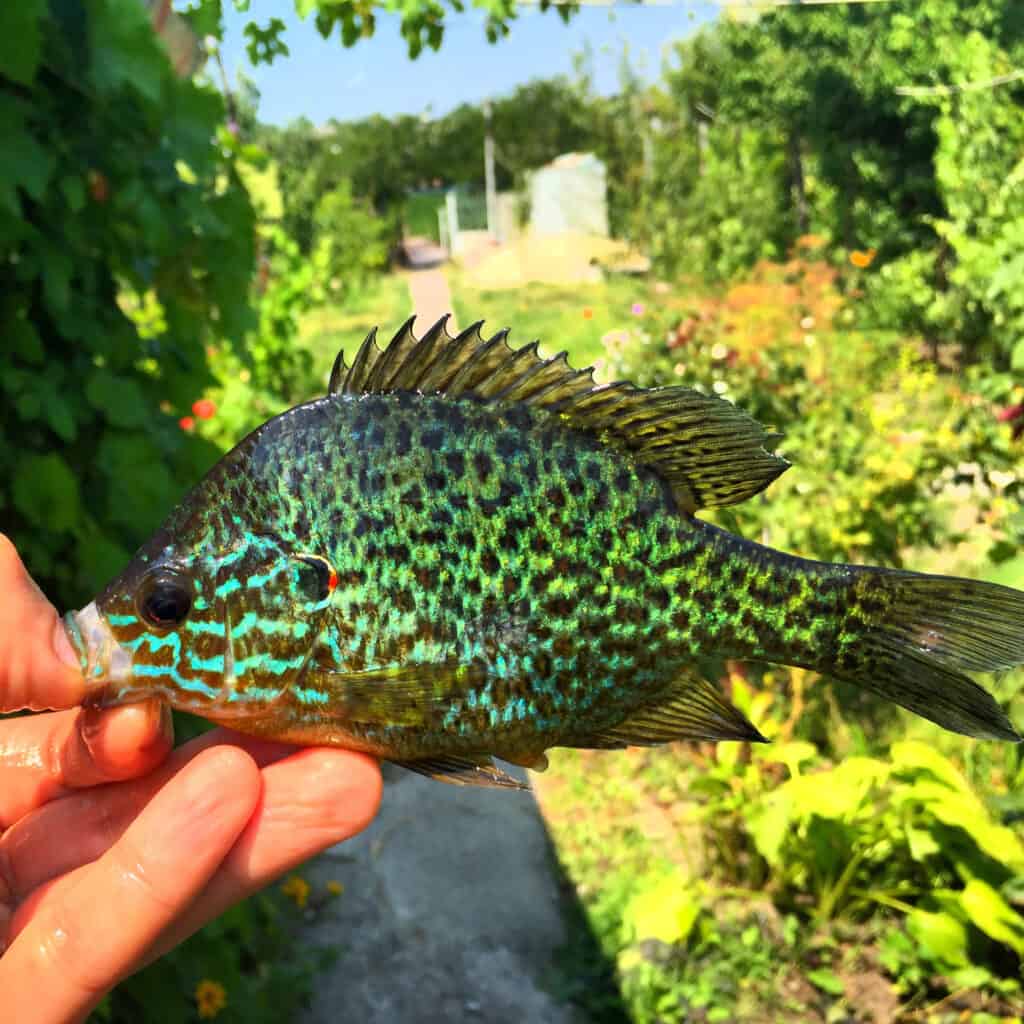
While the Green Sunfish is small, they are highly aggressive and predatory in nature.
©Pocket Draw/Shutterstock.com
So, what’s on the menu? Well, a wide array, that’s for sure. Crayfish, worms, insects — they’re all fair game. But the flatheads’ favorite? Other fish. They’re quite partial to sunfish, shad, and even smaller catfish. It’s a bit like an underwater ‘eat or be eaten’ scenario. These predatory fish are built for hunting, with their flat heads and wide mouths helping them nab their prey.
Nocturnal Nosh
And here’s an interesting tidbit: flatheads prefer to dine in the dark. This is because they’re nocturnal hunters, coming out at night to feed. During the day, they prefer to lie low in deep water, saving their energy for their nocturnal adventures.
Predators of Flathead Catfish
When you’re as big as a flathead catfish, there aren’t too many creatures in the water willing to take you on. But let’s dive into this topic. Who dares to cross paths with these large catfish?
Small Fry on the Line
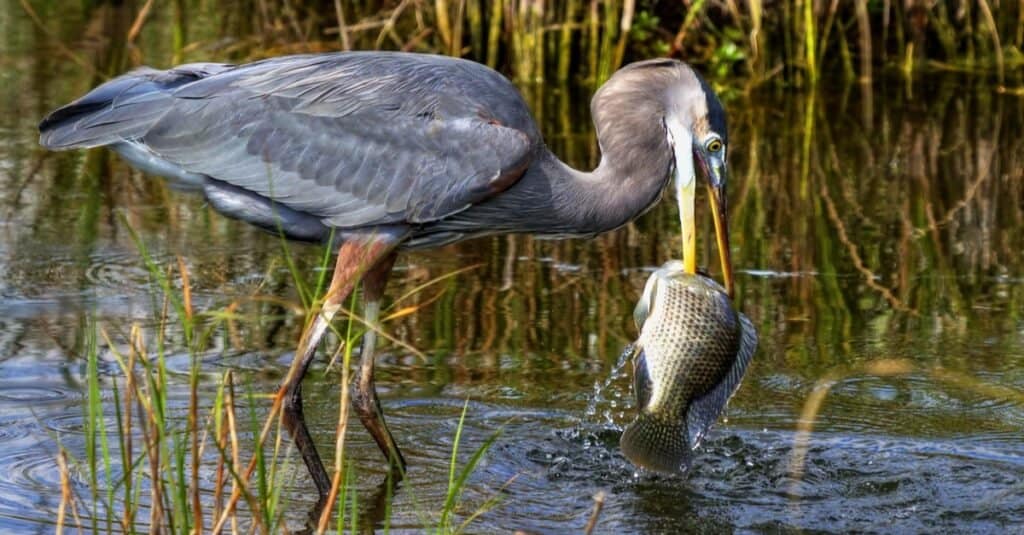
Great blue herons are great fishers, and they love to eat baby flathead catfish!
©David Byron Keener/Shutterstock.com
When flathead catfish are young, they’re more vulnerable to predation. It’s a tough world out there for a baby flathead! They face danger from larger fish like bass and even from bigger catfish. Birds of prey, such as herons and eagles, are also known to swoop down and grab smaller, younger catfish. Life’s pretty intense when you’re just starting out, huh?
Big Fish, Fewer Worries

Alligators
can eat fully-grown flathead catfish in the southern regions they live in.
©Sorbis/Shutterstock.com
As flatheads grow, they find themselves moving up the food chain. Adult flatheads have fewer natural predators due to their large size. However, they’re not completely off the hook. Larger animals, like alligators in the southern parts of their range, can pose a threat. And let’s not forget humans, who fish them for sport and food.
The Greatest Threat of All
Now, here’s the hard truth. The biggest threat to flathead catfish doesn’t come from the water but from us. Overfishing, habitat destruction, and pollution — are all serious concerns for their survival.
Habitat and Distribution of Flathead Catfish in Idaho
The flathead catfish has found quite a comfortable home in the Gem State. Of course, they’re freshwater fish, so they naturally gravitate toward Idaho’s network of lakes, rivers, and reservoirs. But what specifically do they like about these places? So let’s take a deeper dive.
Home Sweet Home
Flatheads are fans of slow-moving waters. They love the depth and the cover offered by large rivers and reservoirs. During the day, you’ll often find them hiding out in deep pools, logs, or undercuts in the riverbanks. It’s like their own little underwater hideaway. They need these hiding spots because, remember, they’re largely nocturnal. When night falls, they come out of hiding to feed and explore.
Spread Across the State
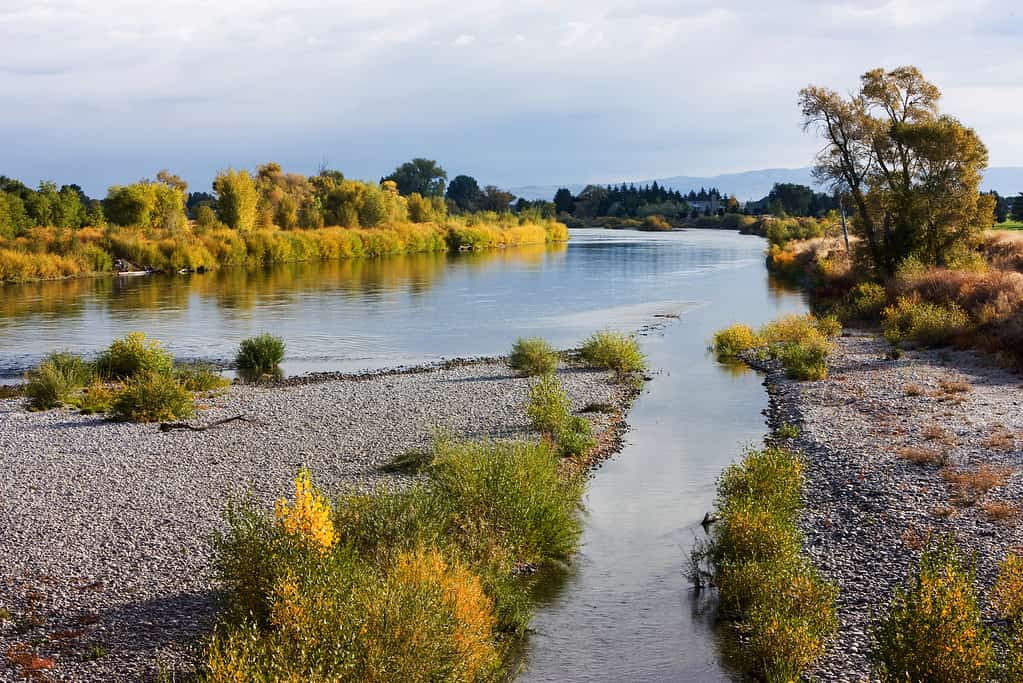
Sunrise on the Snake River near Blackfoot, ID, where many flathead catfish are found.
©Tucker James/Shutterstock.com
Now, let’s talk about where you’d find them in Idaho. Flatheads have spread out across the state over the decades since they were first introduced. You’ll find them in the Snake River, particularly the stretch between American Falls and Swan Falls. They’re also known to inhabit the lower Boise River, Bruneau River, and the reservoirs along these rivers.
The Flathead Catfish in Idaho Ecosystem
Each species in an ecosystem has a role to play, and the flathead catfish is no different. They’re big players in the underwater world of Idaho. But what exactly is their role? Let’s explore.
Top of the Food Chain
Flathead catfish are apex predators in Idaho’s freshwater habitats. This means they sit pretty at the top of the food chain, preying on a variety of smaller creatures. In short, by controlling the populations of their prey, they help maintain a balance in the ecosystem. Imagine them as nature’s population control, if you will.
Keystone Species
Flatheads are also what ecologists call a ‘keystone species.’ This is because they can significantly affect the structure of their community. How, you ask? Well, their predatory habits can indirectly influence the abundance and distribution of other species, shaping the ecosystem as a whole.
Biodiversity Boosters
Additionally, their presence contributes to the biodiversity of the Idaho waters. Biodiversity is crucial for a healthy, functioning ecosystem, and the flathead catfish adds to this by being a part of a diverse array of fish species in the state.
Fishing for Flathead Catfish in Idaho
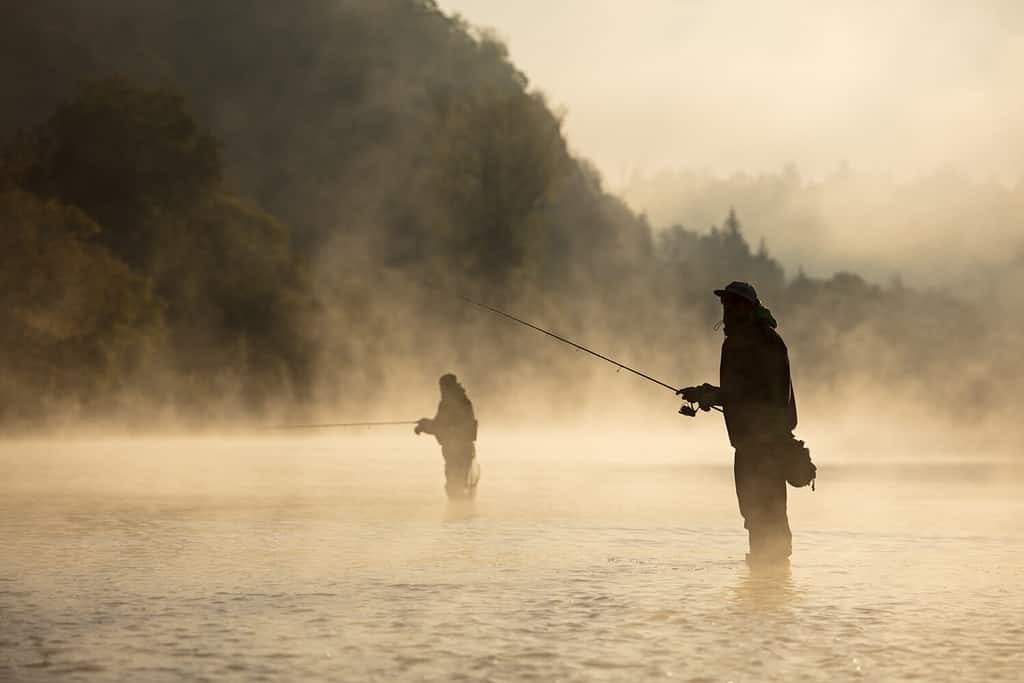
Fishing for catfish is one of the favorite pastimes of Idaho locals.
©Lukas Gojda/Shutterstock.com
There’s something about the thrill of the catch, especially when the catch could be a hefty flathead catfish! Fishing for flatheads in Idaho is a popular activity. Whether you’re a seasoned angler or a novice, reeling in one of these beauties is always an adventure.
Tools of the Trade
When it comes to catching flatheads, you need the right equipment. Heavy-duty rods, sturdy lines, and sharp hooks are the order of the day. And bait? Flatheads are particularly fond of live bait like sunfish or shad. Cast your line near their favorite hiding spots, and you might just get a bite.
Rules of the Game
Let’s not forget about the rules. The Idaho Department of Fish and Game regulates fishing for flathead catfish in Idaho. Make sure you’re up to date with the current regulations, including seasons, bag limits, and size restrictions. Fishing is fun, but it’s also important to fish responsibly to ensure future generations get to enjoy it too.
The Impact on Local Tourism and Economy
Fishing for flathead catfish is more than just a pastime. It’s also a significant contributor to local tourism and the economy. Anglers from all over come to Idaho in hopes of catching these enormous catfish, benefiting local businesses and boosting the state’s tourism industry.
Key Takeaways
We’ve journeyed through the fascinating tale of the flathead catfish in Idaho. From their introduction into Idaho waters to their intriguing biology and behavior, their dietary patterns, and even their encounters with predators, we’ve explored it all.
Additionally, we’ve discovered their preferred habitats across the state and examined their significant role within the local ecosystem. We’ve also delved into the thrilling pursuit of fishing for flatheads.
In essence, the story of the flathead catfish is a testament to Idaho’s vibrant aquatic ecosystems. It underscores the importance of conservation, the excitement of recreational fishing, and the value of biodiversity.
So, when you find yourself by an Idaho river, take a moment to appreciate the underwater world. Below the surface, the flathead catfish might be quietly going about its business, playing a crucial part in the ecosystem.
The photo featured at the top of this post is © iStock.com/stammphoto
Thank you for reading! Have some feedback for us? Contact the AZ Animals editorial team.




